I’ve recently expressed hope on this blog that attitudes are changing about native fish – that anglers and conservationists are valuing the whole of freshwater diversity and not just so-called “gamefish.”
And then I open Outdoor Life magazine, and realize that we have a long way to go. A very, very long way.
The current issue of Outdoor Life (available online) features an article by Natalie Krebs celebrating “the world’s largest bowfishing tournament.” For those outside the hook-and-bullet community, bowfishing is exactly what it sounds – shooting fish with bows and arrows.
At first glance, the story is about using bowfishing for invasive carp control. I have no issue with that.
But even a cursory glimpse reveals this: photos showing piles of dead native fish, especially gar – a toothy predator that has long suffered from angler prejudice.
The article implies that removing predators like gar is “good for the river.”
False.
The story then proclaims that 40,000 pounds of dead fish from this one tournament ended up as “fertilizer.” In other words, the carcasses were buried in a field somewhere. The waste of native fish is difficult to comprehend.
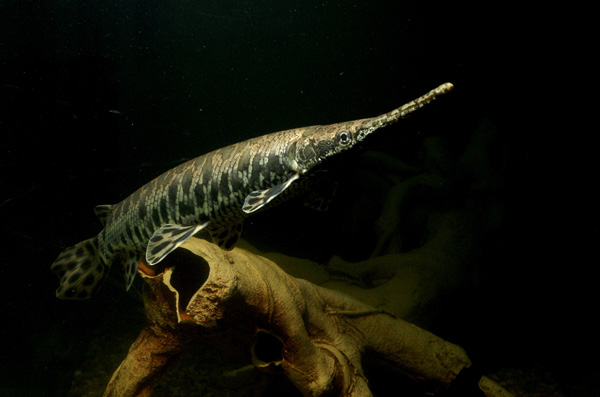
Gar are top predators, integral to river ecosystems. They possess long snouts, are covered in armor and are just flat-out cool looking. There are seven species, found only in North and Central America and Cuba.
They’re an ancient lineage: gar swam with the dinosaurs, and outlasted them. When oxygen levels are low, they can breathe air. Stand along a river in gar country, and you will see that toothy snout push above the surface as they gulp breaths.
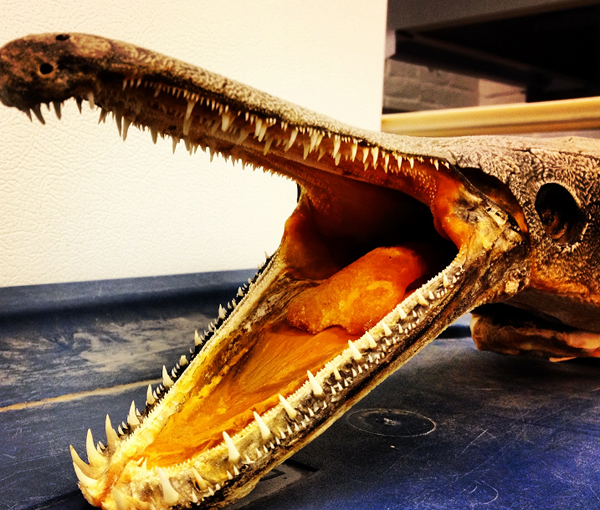
As an angler, I also have to note that gar are spectacular sport fish. I would rather catch a big longnose gar than a largemouth bass any day of the week. They strike ferociously on baits and lures, but can be difficult to hook – which adds to the challenge.
As fishing writer and native fish enthusiast Olaf Nelson writes: “Gar are bad-asses. Muscle, teeth, armor, hunger, tenacity, and confidence add up to a fish that’s a hell of a lot of fun to catch. Small or large, they fight like crazy and no matter how careful you are, they can—and will—cut you. A truly spectacular, beautiful animal.”
Unfortunately, few share Nelson’s enthusiasm. Like suckers, gar have often been accused of crimes they didn’t commit (including eating people!).
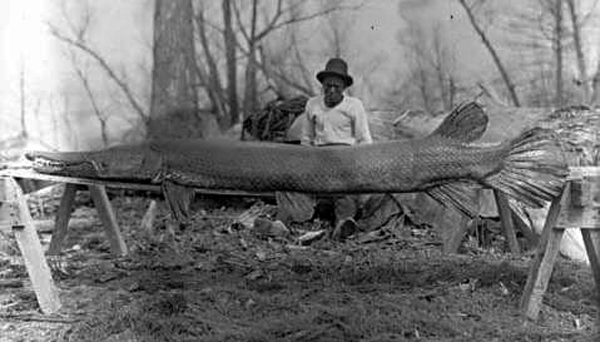
Brush away the flimsy, scientifically baseless justifications – saving gamefish, protecting children – and you’re left with this: the senseless and wasteful killing of valuable native species.
It is hard to imagine the uproar if a venerable magazine like Outdoor Life – which has been advocating “catch and release” for decades – posted photos featuring dumpsters filled with dead bass.
I can only imagine the anger – nay, rage — if hallowed trout waters suddenly allowed bowfishing – if the banks of the Madison and Silver Creek and Henry’s Fork were littered with the carcasses of rainbow and brown trout.
The shouts from anglers would echo across the country, emanating from every fly shop, fishing lodge and boat launches. State fisheries managers could not ignore the uproar. Nor could outdoor magazines.
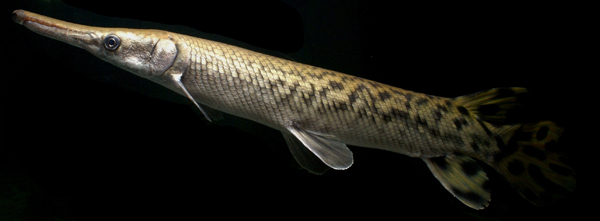
Well, folks: time to start yelling.
There is absolutely no reason gar (and suckers, and bowfins, and other native species) should not be managed like other freshwater gamefish. None at all.
The Outdoor Life story mentions the explosive rise in popularity of bowfishing. Gar populations cannot absorb unlimited take. It’s biologically unjustified.
As covered in my previous blog, there is a growing community of anglers and naturalists who value all native fish. But the reality is, this subculture is dwarfed by other angling interests.
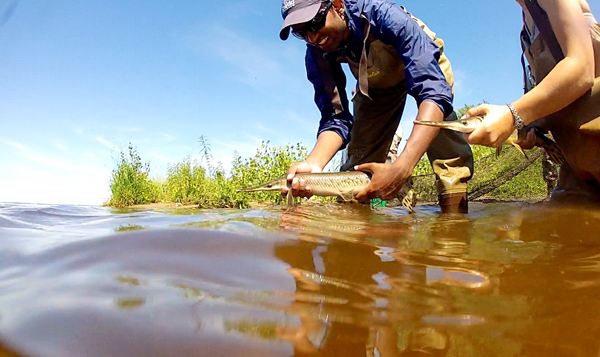
That can make the fight to protect gar and other “rough fish” seem quixotic. Who cares? Don’t freshwater conservationists have bigger issues to worry over?
Gar researcher Solomon David, one of the savviest and most effective conservation communicators I’ve encountered, tweeted this in response to the Outdoor Life article:
.@eatguineapigs seriously, practices/supporting articles like this make me believe we take 1 step forward, 5 steps backward in conservation.
— Dr. Solomon David (@SolomonRDavid) May 21, 2015
But don’t despair. This is a fixable problem. Here, another set of disturbing images pops into my mind: the historic photographs displayed on Hawk Mountain in Pennsylvania.
The images show the ridges of Hawk Mountain piled high with dead raptors: hawks, falcons, eagles. Men with shotguns stand proudly beside them.
Migrating raptors congregate at Hawk Mountain in the fall. And for many years, it was a popular “sport” to go there and shoot them. Shoot a lot of them.
At the time, this too was cloaked in the language of public service. State wildlife agencies considered raptors a menace to gamebirds. The Pennsylvania Game Commission paid a bounty of $5 for every goshawk head.
Even many progressive bird conservationists – the very people passing great legislation protecting songbirds and egrets – considered raptors inherently unworthy of protection.
A bird conservationist named Richard Pough (who coincidentally, would later become the first president of The Nature Conservancy) visited Hawk Mountain in 1929 and documented the carnage.
This led to its purchase by conservationist Rosalie Edge, who established the world’s first sanctuary for birds of prey. As she said at the time: “The time to protect a species is when it is still common.”
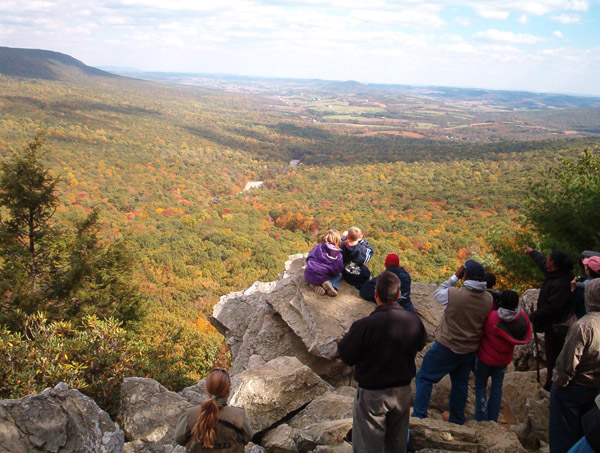
That action changed the narrative for raptor conservation. It set the stage for a constituency to address even bigger conservation challenges: DDT and habitat destruction among them. The conservation success stories of peregrine falcons, bald eagles and ospreys all can be traced back to Hawk Mountain.
There is no difference between piles of dead hawks and piles of dead native fish. In both instances, the mass killings are biologically unjustified and wasteful. They have nothing to do with thoughtful hunting and fishing.
The solution here is simple: manage gar, bowfins and other “rough” fish the same as freshwater gamefish. Use science-based limits and regulations.
Anglers can still catch them. They can still keep enough to have dinner, just as is the case with walleyes or smallmouth bass.
That seems like a common-sense solution, but I have no illusions it will come easy. Neither did the protection of raptors.
Last week, a social media storm erupted about the Outdoor Life article – and that’s reason enough for hope. There is indeed a growing legion of freshwater fish enthusiasts – garficionados, if you will – who are tired of great fish being treated like trash.
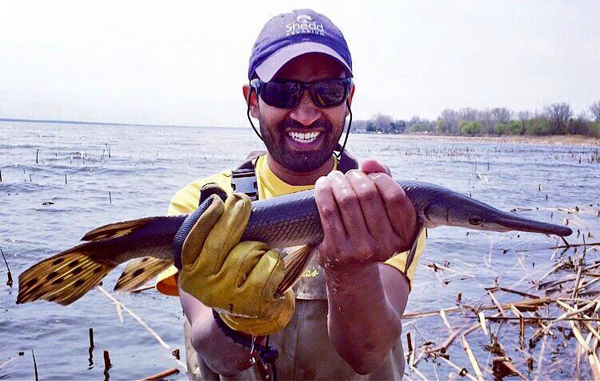
Visit Hawk Mountain Sanctuary today, surrounded by birders, and it’s hard to imagine the area piled with dead hawks. Some day, it will be the same for gar.
And while native fish face many problems, this issue is a good starting point. Now is the time to end the gar wars.
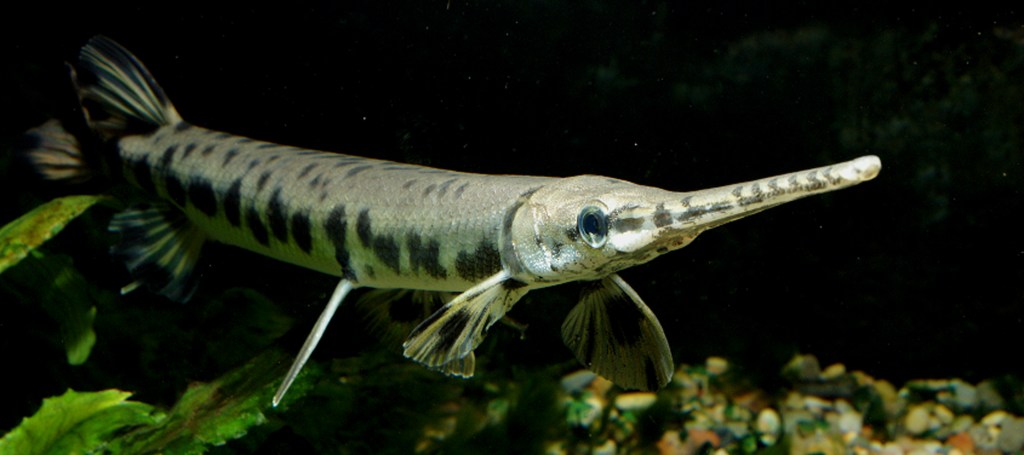



A WELL WRITTEN ARTICLE THAT NEEDS EVEN WIDER DISTRIBUTION
They’re doing the same thing with coyotes. There are hunters who think they are doing a service by year-round coyote hunting. They might as well be killing rats.
Coyotes are just responding to our having removed the top predator for the ecosystem. Shooting them will not solve the “problem,” and has no benefit until proven otherwise.
I agree these magnificent prehistoric species should be preserved or fished responsibly. It would benefit if you had included an action link to forward comments to magazine or someone who makes decisions or both. Thanks! Just a spectator.
I love gar and am thankful you are bringing all of this to light. My one criticism is the absence of any real call to action. Folks who are not on the front lines need to be told what to do, or they will likely do nothing.
i’ve never understood the ‘sense’ in killing fish for the fun of it seems to be the essence of bowfishing. Hunt & take what you need but bowfishing is reminenscent of the commercial fishing excesses of a wasted ‘by catch’.
Common carp are too often blamed for ecologicial issues that invariably stem from man’s interference. Dams and water abstraction lead to low flow and more silt (carp like silt), agricultural and other run off leads to high nutrients and algal blooms (detrimental to many species but often tolerated by carp) and so it goes on. Killing big carp as happens with bowfishing further upsets the ecosystem and invariably leads to stunted populations with even more biomass. Dutch research shows that common carp can co-exist with many species, especially in temperate climates where carp spawn & fry become a vaulable food source for other species with very few small carp surviving over winter. Waters with big carp invariably have big bass, pike, perch and other native species.
Practice ‘catch & release’ angling, only take what you need and above all focus on the real issues that are damaging our environment. That way we might just have something to pass on to the next generation.
Way to go Matt! Well written and I dig your comparison between gar and raptors. Hopefully things will change and bow”fishing” will be made illegal across the continent.
Gar also make wonderful photographic subjects! Loved to “shoot” them in Florida streams and rivers.
I have fished for many species that when I started fishing for them people would say, leave those junk fish alone. Carp on the Rio Grande NM 20 years ago. Carp and gar in the Pigeon and French Broad in Tn. Oh the things people would yell at me watching me catch these fish. Now look at carp on the fly. Big time. People are crazy about it, as they should be. Carp are a great fish and so are gar. Sight fishing gar is amazing.
Maybe it’s just me but, I just don’t understand why fly anglers don’t enjoy sight fishing big fish that will hit a fly like it stole it’s girlfriend, launch its self into the air and put up one heck of a fight. But, again I guess catching a great fish isn’t for everyone.
The state where the tournament was held (Missouri) does have limits on gar and other native rough fish. You can only harvest 20 rough fish in aggregate. So 10 gar + 10 buffalo is a limit.
And the fish harvested from this tournament were processed into commercial liquid fertilizer, not buried in a field. The company doing this was there at the tournament and provided samples to all the competitors.
Sounds like limits that are way too high. End this “competition”, please.
Ignorance is a feisty critter. Stupid seems impossible to exterminate. Someone just seems to keep pumping life back into them.
What a refreshing notion it is, to consider how much less complicated life could become, if people simply paused for a moment to contemplate the relationship between all life forms on the Earth. When this very simple act of ‘thinking’ is commenced, the participants begin to realize they are but one, very small cog, in a very large and multifaceted wheel of life.
It is humbling enough to jolt one into actually thinking everything has purpose and place. And the insane notion that removal of a competitor as being a superior position, takes its proper place alongside the notion that we could actually live without breathing.
May sanity regain a solid foothold, before we all slide off into oblivion.
Just sayin’…
#justsayin #thinkboutit
I whole-heartedly agree! I own a 30 acre oxbow off the Wabash River in Indiana and the longnose gar there have always been welcome alongside of the crappie, bluegill, catfish and bass we most enjoy fishing for food as well as the common carp and buffalo fish. I even remember feeding a number 8-10 inch gar one summer day as a youngster when a ‘hatch’ of toads were leaving the water of a ditch tributary to the oxbow. Never seen so many young toads, a few thrown back to the gar didn’t matter. Every time a toad hit the water a gar was there. The first time I got a gar on the line when fishing for crappie I was disappointed, but they never were never a disappointment again for the fight they put up.
Great article!
Right on Matt! I just finished a piece about bowhunting tournaments for cownose rays on the Chesapeake. Hundreds of thousands of pounds left to rot. The justification is that the shellfish industry imagines (falsely) that they deplete oysters. The industry shibboleth is “Eat a Ray; Save the Bay.” But few people eat them; and killing them won’t save the bay or even help it.
This is awesome I’m so very stoked to see people backing Gar. A good friend and I are working on a project called Gar Bros Collective, we are mainly focused on Gar on the fly! Gar is a beautiful, wonder,and spectacular fighting fish! We want to see them get the respect they deserve! I’d love to get in contact with more people that love and respect Gar, please like our page Gar Bros Collective and join out community on Facebook #garbros